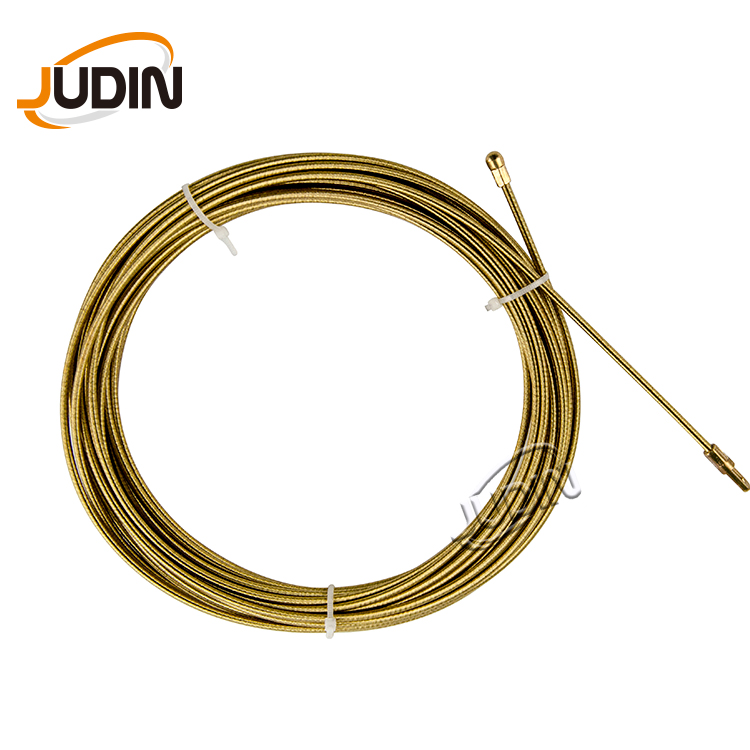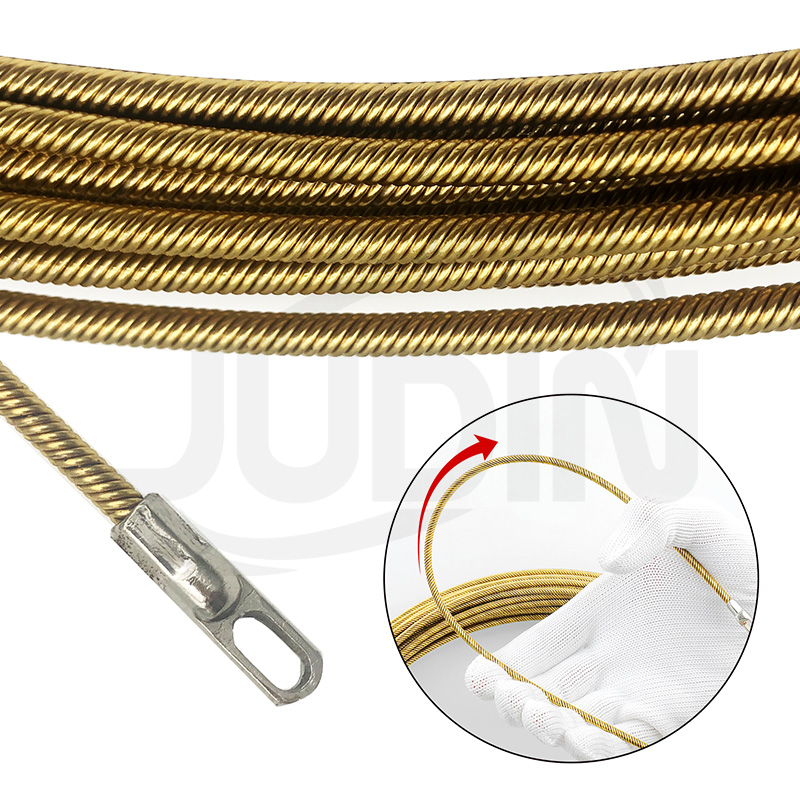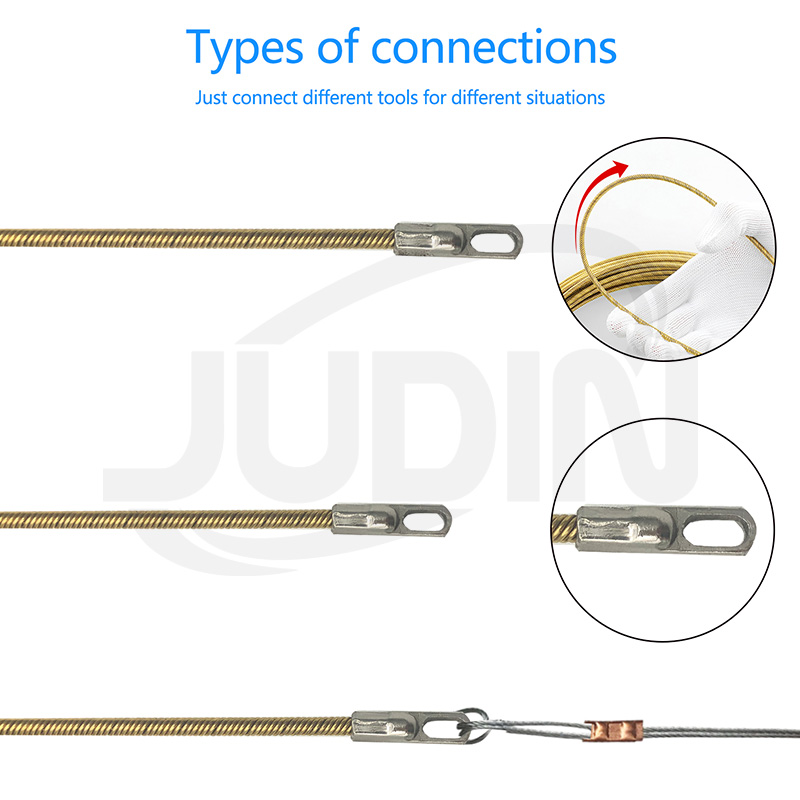Fish tape helps you pull wires through walls and conduits with ease. This tool works well in tight spaces where manual wiring feels impossible. Its design reduces the risk of damage to wires, saving you time and effort. Whether you’re an electrician or a DIY enthusiast, fish tape makes installations faster and safer.
Key Takeaways
- Fish tape helps pull wires through small spaces easily. It makes work quicker and safer.
- Pick the right fish tape for your job: steel for tough tasks, fiberglass for safety, and nylon for bending around corners.
- Check your fish tape for damage before using it. Plan your wire path to dodge any blocks.
Understanding Fish Tape
What is Fish Tape?
Fish tape is a tool that helps you pull wires through walls, conduits, or other confined spaces. It is a long, thin strip of material, often made from steel, fiberglass, or nylon. You can think of it as a guide that simplifies the process of running wires where your hands cannot reach.
The tool works by feeding the tape through the desired path. Once it reaches the other side, you attach the wire to the tape and pull it back through. This process saves time and effort, especially in complex wiring projects. Electricians and DIY enthusiasts rely on fish tape to handle installations efficiently.
Types of Fish Tape
Fish tape comes in different materials, each suited for specific tasks:
- Steel Fish Tape: Strong and durable, ideal for straight runs and heavy-duty jobs.
- Fiberglass Fish Tape: Non-conductive and safer for working near live wires.
- Nylon Fish Tape: Lightweight and flexible, perfect for tight bends or delicate wiring.
Some fish tapes also feature advanced designs, such as laser-etched markings for measuring distances or ergonomic handles for better grip. Choosing the right type depends on your project’s requirements.
Tip: Always select a fish tape that matches the wire size and the complexity of the path. This ensures smooth operation and reduces the risk of damage.
Solving Wiring Challenges with Fish Tape
Navigating Tight Spaces
Tight spaces can make wiring feel like an impossible task. Fish tape helps you overcome this challenge by acting as an extension of your hand. Its slim and flexible design allows you to guide it through narrow conduits, behind walls, or around obstacles.
To navigate tight spaces effectively, start by straightening the fish tape as much as possible. This reduces resistance and makes it easier to push through confined areas. If you encounter a bend or curve, gently rotate the handle to guide the tape around the obstruction. Avoid forcing it, as this could cause the tape to kink or jam.
Tip: Use a flashlight to inspect the path before inserting the fish tape. This helps you identify potential obstacles and plan your approach.
Avoiding Wire Damage
Protecting your wires during installation is crucial. Fish tape minimizes the risk of damage by providing a smooth and controlled way to pull wires through conduits. However, improper use can still lead to issues like frayed insulation or broken wires.
To avoid damage, ensure the wire is securely attached to the fish tape. Use electrical tape to fasten the wire to the tape’s loop, wrapping it tightly to prevent slipping. When pulling the wire, apply steady pressure and avoid sudden jerks. This reduces strain on the wire and prevents it from snagging on sharp edges.
Note: If you’re working with delicate wires, consider using a non-conductive fish tape made of fiberglass or nylon. These materials are gentler on wires and safer for electrical work.
Handling Long Distances
Pulling wires over long distances can be challenging, especially if the path includes multiple bends or turns. Fish tape simplifies this process by allowing you to feed the tape through the entire length of the conduit before attaching the wire.
For long-distance pulls, choose a durable fish tape like the Full Spring Steel Cable Puller. Its robust construction ensures it can handle the added tension without breaking. Feed the tape slowly and steadily, checking for resistance as you go. If the tape gets stuck, pull it back slightly and try again. This technique helps you avoid kinks and ensures a smooth pull.
Pro Tip: Use a lubricant designed for electrical work to reduce friction in long conduits. This makes it easier to pull the fish tape and wires through.
Using Fish Tape Effectively
Preparation
Before you begin, gather all the tools and materials you need. This includes your fish tape, electrical tape, and the wires you plan to install. Inspect the fish tape for any signs of damage, such as kinks or rust, which could affect its performance. A clean and well-maintained tool ensures smoother operation.
Plan your wiring route carefully. Identify the entry and exit points, and check for potential obstacles like sharp bends or tight spaces. If possible, use a flashlight or a small inspection camera to examine the conduit or wall cavity. This step helps you anticipate challenges and avoid unnecessary delays.
Tip: Wear gloves to protect your hands from cuts or abrasions while handling the fish tape.
Feeding the Fish Tape
Start by inserting the fish tape into the conduit or wall opening. Hold the handle firmly and feed the tape slowly, keeping it straight to minimize resistance. If the path includes bends, rotate the handle gently to guide the tape around corners. Avoid forcing it, as this could cause the tape to jam or kink.
For longer runs, pause occasionally to check the tape’s progress. If you encounter resistance, pull the tape back slightly and try a different angle. This technique helps you navigate tricky sections without damaging the tool or the conduit.
Pro Tip: Mark the tape at regular intervals using a permanent marker. This allows you to track how far it has traveled and estimate the remaining distance.
Attaching and Pulling Wires
Once the fish tape reaches the other end, securely attach the wire to its loop or terminal hole. Use electrical tape to fasten the wire, wrapping it tightly to prevent it from slipping during the pull. Ensure the connection is smooth to avoid snags.
Pull the fish tape back slowly and steadily. Apply consistent pressure, and avoid jerking motions that could damage the wire or cause it to detach. If the wire gets stuck, stop and assess the situation. Pull the tape back slightly, adjust the angle, and try again.
Note: For heavy-duty tasks, a robust tool like the Full Spring Steel Cable Puller can handle the added tension and ensure a smooth pull.
Troubleshooting Tips
Even with careful planning, issues can arise. Here’s how to address common problems:
- Tape Gets Stuck: Pull it back gently and inspect the path for obstructions. Use a lubricant designed for electrical work to reduce friction.
- Wire Slips Off: Reattach it securely using more electrical tape. Double-check the connection before pulling again.
- Kinks in the Tape: Straighten the tape manually or use a pair of pliers to smooth out minor bends. Replace the tape if the damage is severe.
Reminder: Regular maintenance of your fish tape, such as cleaning and proper storage, extends its lifespan and ensures reliable performance.
Fish tape is your go-to tool for tackling wiring challenges. It helps you navigate tight spaces, protect wires, and handle long distances with ease.
Tip: Practice the techniques shared here to make your next wiring project faster and safer. With the right approach, you’ll achieve professional results every time.
 |
 |
 |
FAQ
How do you choose the right fish tape for your project?
Select based on material and task. Steel works for heavy-duty jobs, fiberglass for safety near live wires, and nylon for flexibility.
Can fish tape handle multiple wires at once?
Yes, fish tape can pull multiple wires. Bundle them securely with electrical tape to prevent tangling or slipping during the pull.
What should you do if the fish tape gets stuck?
Pull it back gently and inspect the path. Use lubricant to reduce friction or adjust the angle for smoother navigation.
Post time: May-16-2025







